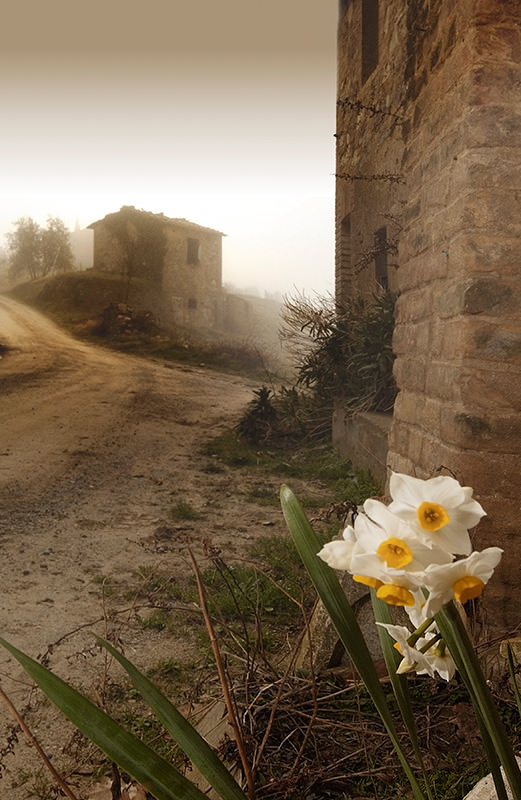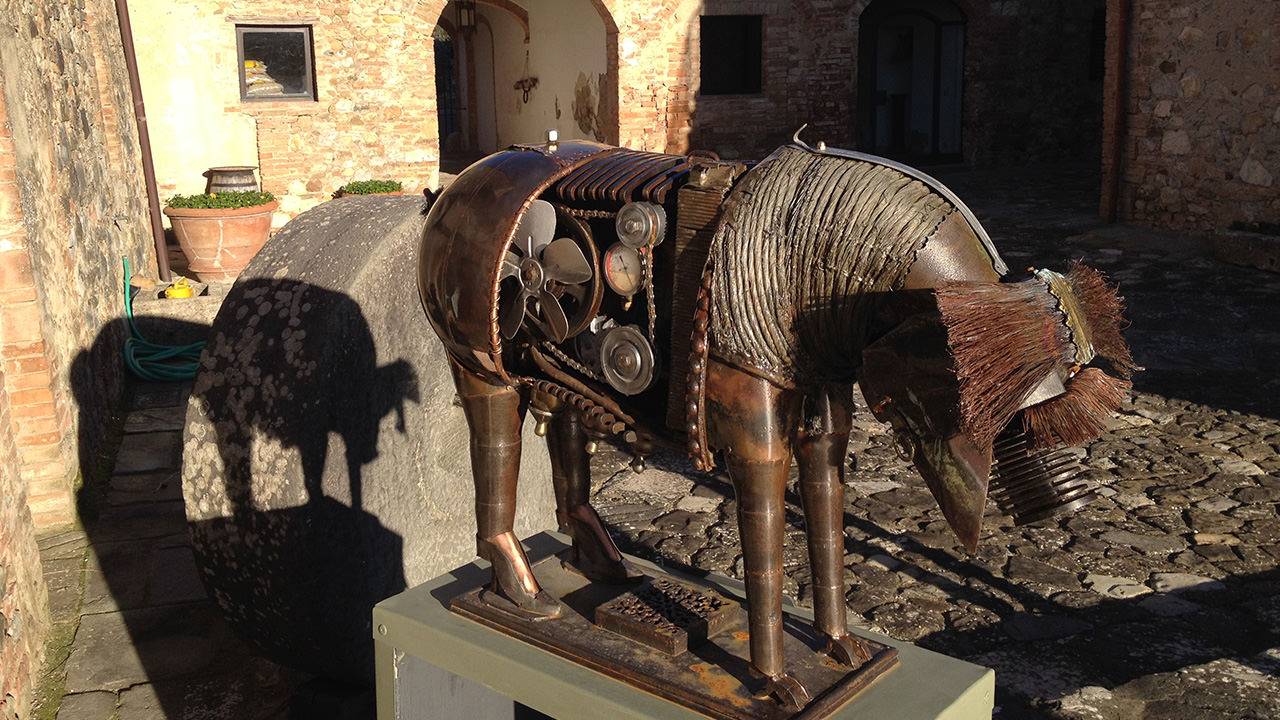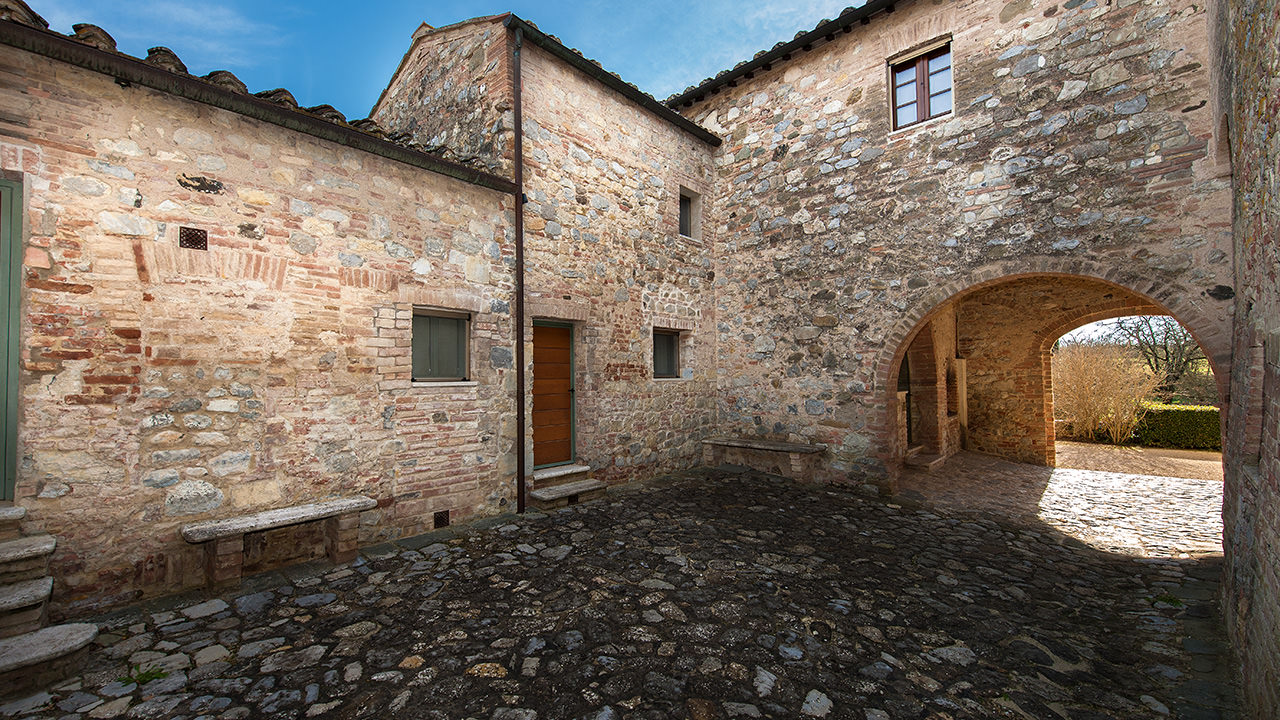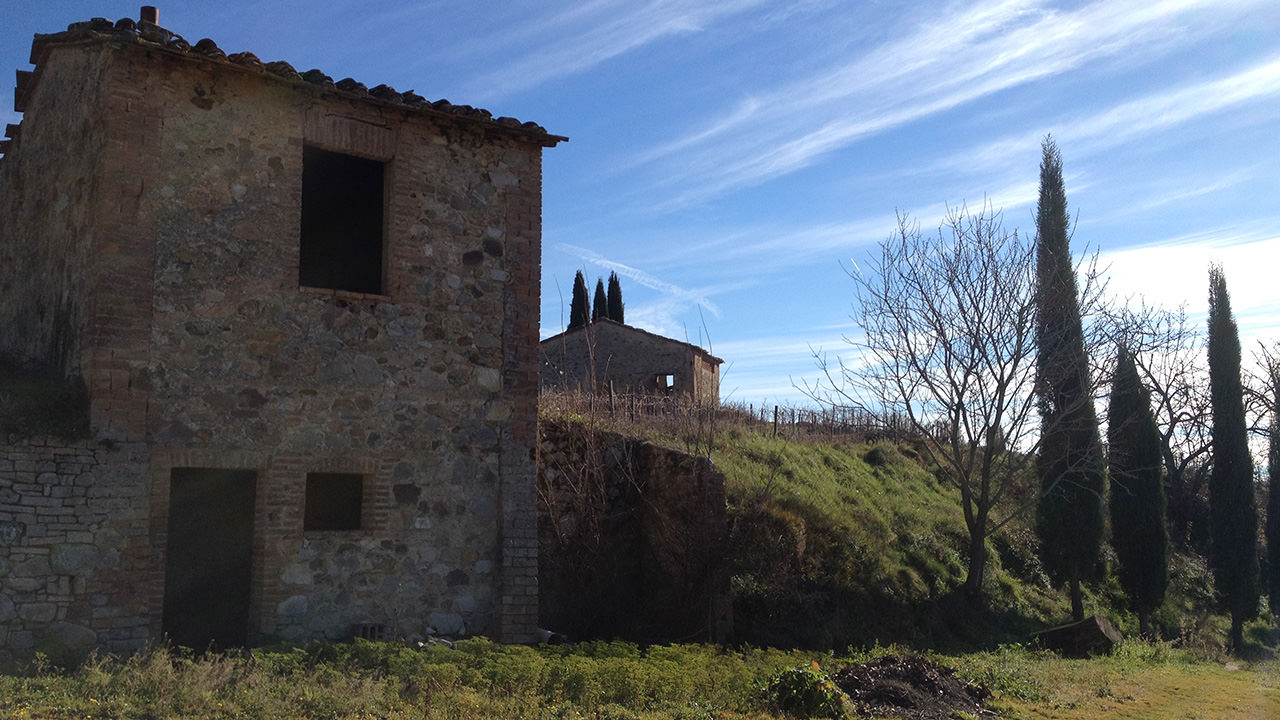HISTORY
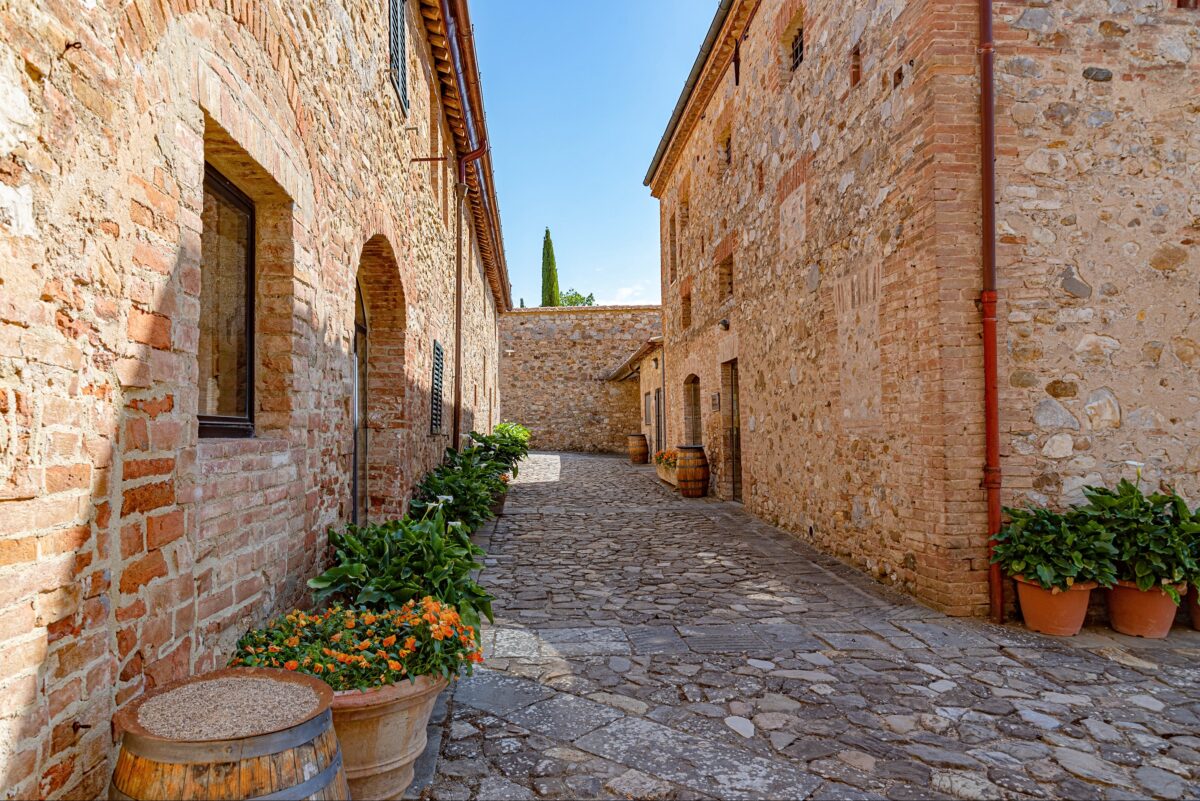
The medieval village
The medieval settlement of Castell’in Villa maintains many of the original structures, keeps a privileged position, and offers one of the most exciting views of the Chianti Senese.
The first news to document its existence dates back to August 1176, when Ugo di Valcortese signed a paper with which the community formally became part of the Municipality of Siena.
Other information communicates that the Sienese furrier Palmiero di Bruno was named mayor of Castell ‘in Villa in January 1263.
Probably for its particular location, Sienese people built the high tower to control Florence, Sienna’s eternal rival. In fact, because of its border position, Florentines constantly besieged the village of Castell’in Villa. Today, San Cristoforo Church still stands on the edge of the borough, and the tower still dominates the medieval town. All around, the hospitality structures of the modern Castell’in Villa estate develop.
In 1968, Riccardo and Coralia Pignatelli della Leonessa purchased the three hundred hectares estate. After a careful, conservative restoration, Castell’in Villa still maintains its medieval charm.

The medieval village
The medieval settlement of Castell’in Villa maintains many of the original structures, keeps a privileged position, and offers one of the most exciting views of the Chianti Senese.
The first news to document its existence dates back to August 1176, when Ugo di Valcortese signed a paper with which the community formally became part of the Municipality of Siena.
Other information communicates that the Sienese furrier Palmiero di Bruno was named mayor of Castell ‘in Villa in January 1263.
Probably for its particular location, Sienese people built the high tower to control Florence, Sienna’s eternal rival. In fact, because of its border position, Florentines constantly besieged the village of Castell’in Villa. Today, San Cristoforo Church still stands on the edge of the borough, and the tower still dominates the medieval town. All around, the hospitality structures of the modern Castell’in Villa estate develop.
In 1968, Riccardo and Coralia Pignatelli della Leonessa purchased the three hundred hectares estate. After a careful, conservative restoration, Castell’in Villa still maintains its medieval charm.
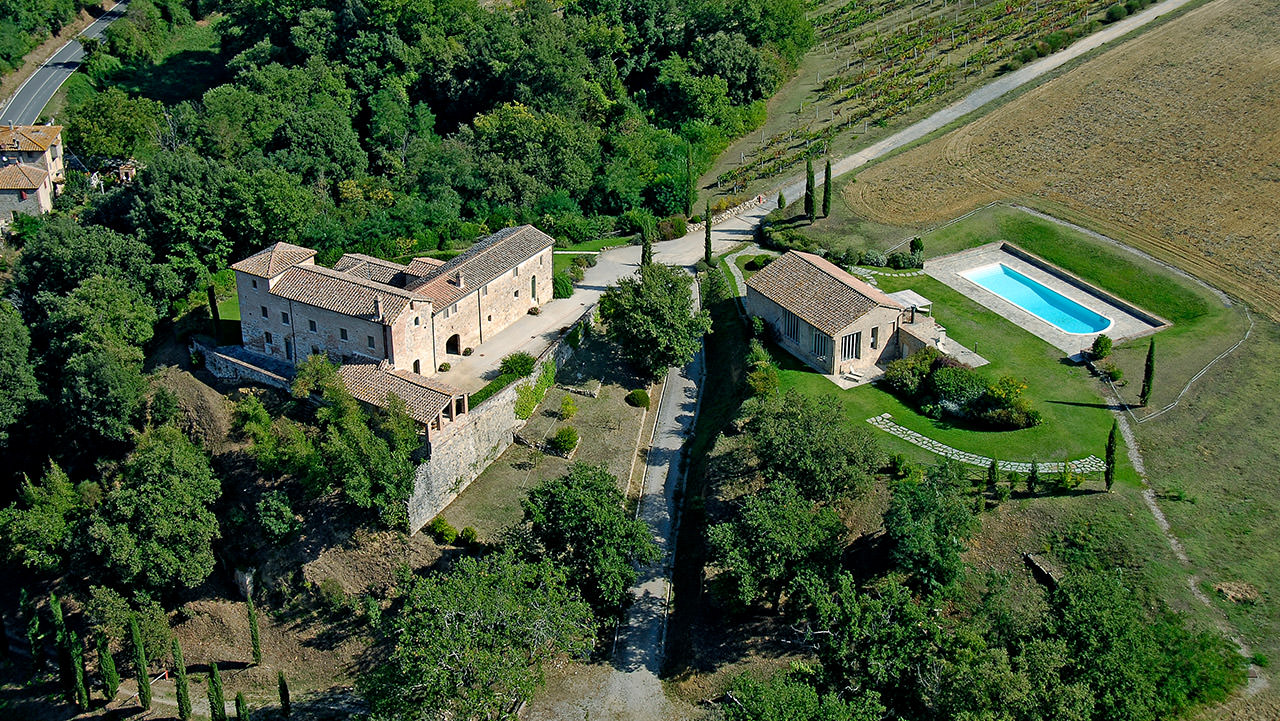
Gazzara
The settlement of Gazzara is part of the medieval village of Castell’in Villa. We know that, in the 15th century, it belonged to the Clarisse nuns, while in 1783, it consisted of a house for peasant use, stables for oxen, horses, sheep, and pigs, a hut, a cloister, a cellar, and a church dedicated to San Martino.
Today, Gazzara is part of the Castell’in Villa estate, and, thanks to the restorations, it meets the modern needs of hospitality for tourists.
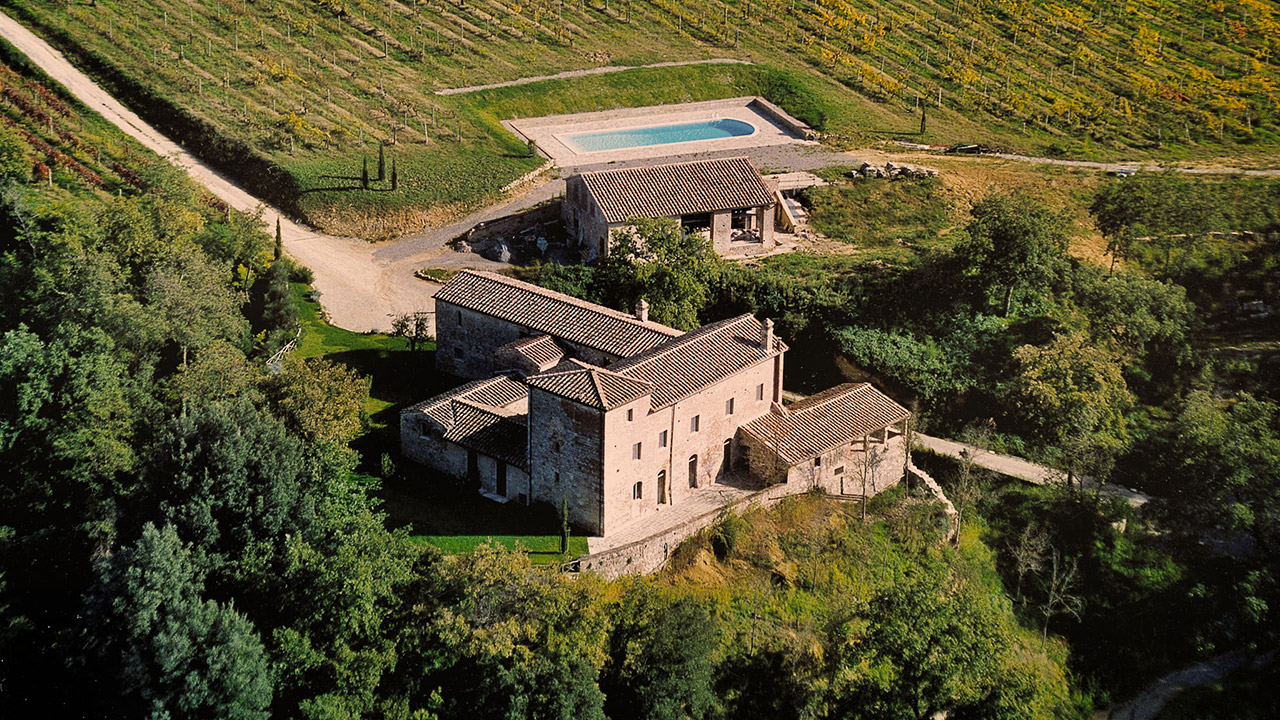
Gazzara
The settlement of Gazzara is part of the medieval village of Castell’in Villa. We know that, in the 15th century, it belonged to the Clarisse nuns, while in 1783, it consisted of a house for peasant use, stables for oxen, horses, sheep, and pigs, a hut, a cloister, a cellar, and a church dedicated to San Martino.
Today, Gazzara is part of the Castell’in Villa estate, and, thanks to the restorations, it meets the modern needs of hospitality for tourists.
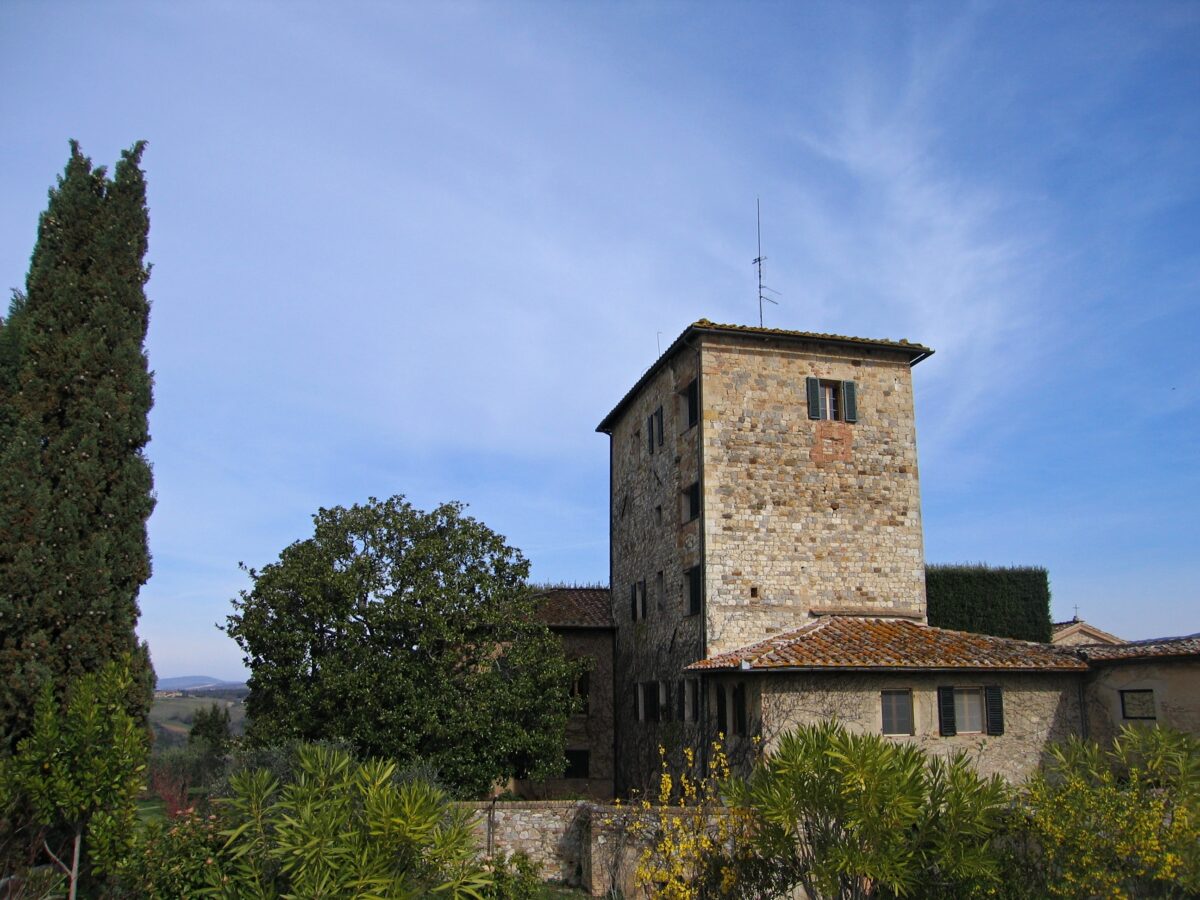
Castell’in Villa
in literature
The illustrious and cultured travelers who visited Italy in the past wrote words full of admiration for Tuscany, especially for the Chianti area.
Between 1802 and 1803, the famous Scottish writer Joseph Forsyth stated that the variety of the landscape and the production of oil and wine were the primary resources of the territory.
Even the 19th-century sculptor William Story recalls the beauty of Chianti in harvest time, and the poet Mario Luzi too described the beauty of the “Crete Senesi.” As then, today, particularly intense atmospheres pervade the whole Castell’in Villa estate.

Castell’in Villa
in literature
The illustrious and cultured travelers who visited Italy in the past wrote words full of admiration for Tuscany, especially for the Chianti area.
Between 1802 and 1803, the famous Scottish writer Joseph Forsyth stated that the variety of the landscape and the production of oil and wine were the primary resources of the territory.
Even the 19th-century sculptor William Story recalls the beauty of Chianti in harvest time, and the poet Mario Luzi too described the beauty of the “Crete Senesi.” As then, today, particularly intense atmospheres pervade the whole Castell’in Villa estate.

